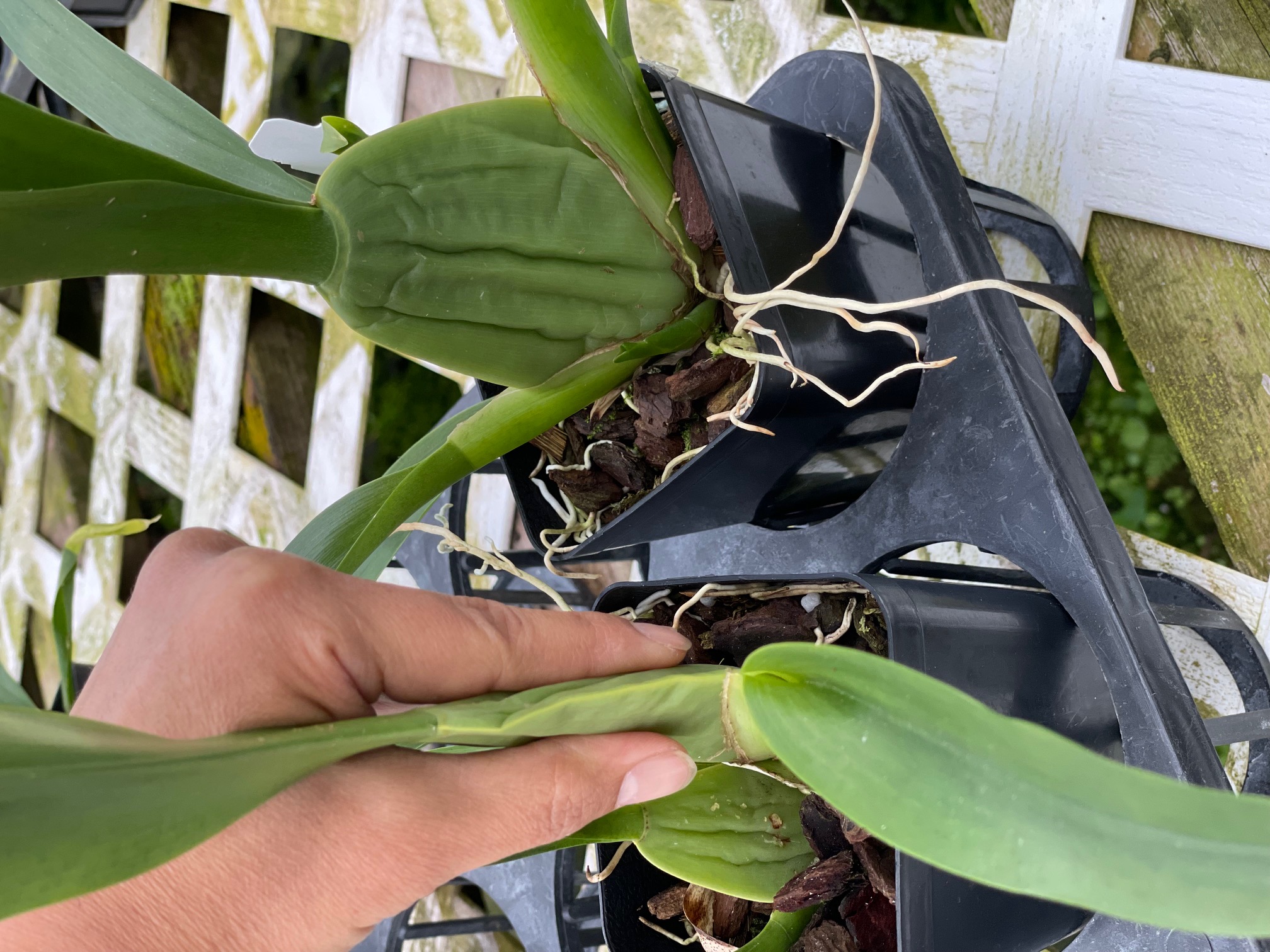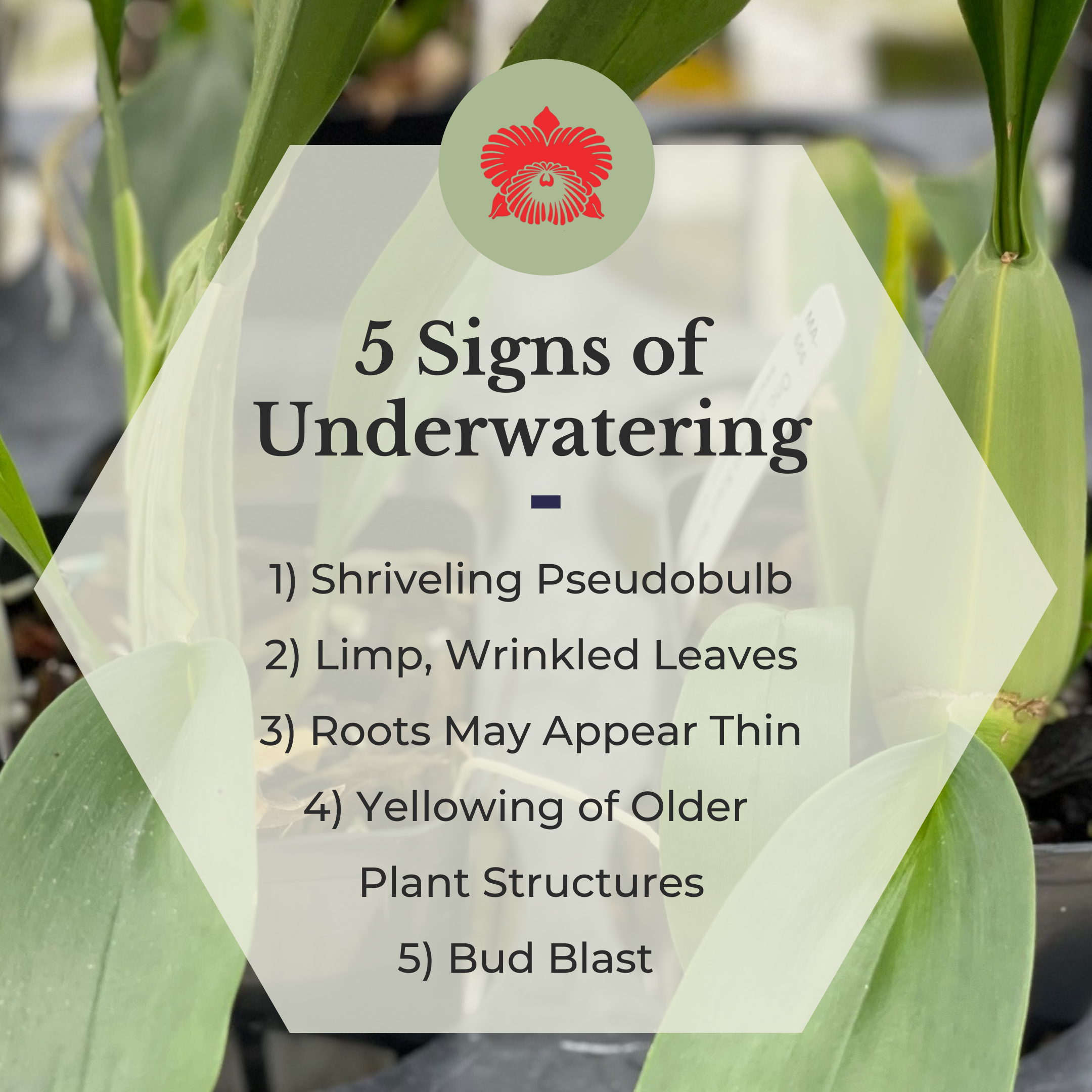
5 Signs of an Underwatered Orchid
Posted by Kamaile & Corinne on Jul 19th 2022
Everyone wants to know the secret to orchid care, as if there really is just one secret to keep an orchid alive.
It isn't a secret, we all know that watering is key to growing and we do everything we can to avoid overwatering orchids. But, how do you determine just how much and how often to water your orchids? How can we tell we're watering enough?
The truth is, you can follow every guide available, but you must remember it Is just that, a guide. Simply put, your orchid will tell you if you’re on the right track and if it’s happy.
This article is written to teach you how to understand your orchid and water with confidence so that you don't subscribe to myths like watering orchids with ice cubes.
Let's get started. We also created a video about this topic as an additional visual aid to show the visible effects of underwatering.
Here are 5 Easy-to-Spot Signs
#1 – A Shriveling Pseudobulb
Pseudobulbs are an essential part of many orchids, like Cattleyas and Oncidiums, that act as storehouses for water and other important nutrients.

These plants will use the reserves in their pseudobulbs when they do not receive adequate hydration. At that time, you will easily begin to see these storehouses wrinkle and wither.
There is hope for a shriveled pseudobulb on an orchid with healthy roots. With proper watering these plants will tend to plump back up over time, to an extent. They may show scarring or damaged tissue where the pseudobulb’s cell structures were damaged, but they can refill most of their storage system.
Of course, there is a point of no return when it comes to plumping up a dehydrated pseudobulb that is too far gone. In that case, we just need to continue a proper watering regimen to properly fill any newer growths.
So, if your orchid has a pseudobulb, keep a close eye there as it will usually be the first sign.
#2– Limp, wrinkly, crinkled, or accordion-like leaves
Oncidiums, Odontoglossum, Zygopetalum, and Miltoniopsis are some of the orchid types that will signal distress with their leaves in a dramatic crinkling. Some leaves may even appear accordion-like and will not be able to fully open.
Phalaenopsis and Cattleya leaves display a bit differently. You will notice that they begin to limp and appear leathery.
#3 – Roots may appear thin and wrinkled
Slight shriveling of air roots (or those exposed roots hanging out of the pot) are also a signal from a dehydrated plant. But if the underwatered orchid roots are still firm with green tips your orchid plant is still healthy and very much alive.
#4 – Yellowing of leaves or pseudobulbs
If your plant finds itself in dire need of water, it will resort to using resources from the older structures after having drained the newest pseudobulb. At the extremes of survival, orchids will sacrifice these older parts to stay alive.
Keep an eye out for the first 3 signs and you shouldn’t find your orchid sending out this 4th SOS!
#5 – Bud Blast (dropping of buds) and softening of already opened flowers on a blooming plant
Finally, bud drop. Most of our orchid plants are annual bloomers. We wait an entire year to enjoy their orchid flowers, so this signal hurts us hobbyist the most.
Under stressful situations, orchids will try to conserve energy and shed high consuming structures. Unfortunately, aside from our own enjoyment, orchid flowers are deemed “unnecessary” for the plant’s survival especially if there are new growths or more “useful” parts of the orchid plant. Because of this, a lack of water can cause our orchid buds and blooms to fall off prematurely.
To avoid disappointment, be sure to not forget to water your plant while you are enjoying their blooms.
In Conclusion
We went over quite a bit in this article. There is a lot for
you to learn from your plant, and even more for you to enjoy. But let’s be sure
you grasp the basics to an underwatered orchid.

Here are the 5 key signs…
- 1.A shriveled pseudobulb.
- 2.Limp or wrinkly leaves
- 3.Thin and wrinkly roots.
- 4.Older structures yellowing or shriveling.
- 5.Bud blast and premature flower drop.
It’s easy to get discouraged when we see others succeeding but are having difficulties ourselves. But be patient.
The easiest and sure way to confirm that you’re on the right track and doing everything right is by knowing the signals that would tell you otherwise and by not seeing them.
And if you do see these signs, at least now you know how to navigate through the process with confidence and trust.
